 January 14, 2016 John E. Ross, KD8IDJ, Editor
| |||||||||
ARRL Asks FCC for "Minimal but Necessary Changes" to Correct Reapportioning Error The ARRL has petitioned the FCC to fix a "shortfall in available RTTY/data spectrum" the regulator created when it reapportioned 80 and 75 meters a decade ago. The League's January 8 Petition for Rule Making asks the FCC to shift the boundary between the 80 meter Specifically, the petition asks the FCC to make the following changes, with regard to 80/75 meters:
The ARRL contended that the FCC Report and Order in Docket 04-140 released in 2006 made "a very substantial" and unjustifiable departure from what the so-called "Omnibus" Notice of Proposed Rule Making (NPRM) had proposed, with respect to 75 and 80 meters. The resulting R&O in that proceeding, among other actions, expanded voice privileges on additional frequencies in various bands, including 75 meters. The FCC shifted the phone/image subband from 3750-4000 kHz to 3600-4000 kHz, trimming the 80 meter RTTY/data subband from 3500-3750 kHz to 3500-3600 kHz and changing "the entire dynamic of this band substantially," the League said. The League said that, while the Omnibus R&O indicated that incumbent licensees would lose no operating privileges, some licensees "clearly" did. The ARRL said the most substantial adverse effect of the "unexpected and vast expansion" of the 75 meter phone/image was the elimination of access to 3620-3635 kHz by ACDS. The Omnibus R&O rule changes limited 80 meters to 3500-3600 kHz, and no longer authorized RTTY and data emissions above 3600 kHz. The R&O also did not modify § 97.221 of the rules, "so its provision for automatically controlled digital stations in the subband 3620-3635 kHz was rendered a nullity," the League said. "This was clearly an oversight by the Commission at the time." The FCC denied a subsequent ARRL Petition for Reconsideration seeking a partial stay of the new rules and instead replaced the inadvertently deleted 3620-3635 kHz ACDS segment with 3585-3600 kHz. "Far from fixing the problem created by the error in the Omnibus R&O, the moving of the inadvertently deleted digital subband downward in frequency below 3600 kHz made the situation in the 80 meter RTTY/data subband even worse than it was," the ARRL said. The result has been a shortfall in available RTTY/data spectrum at 80 meters. Read more. Subcommittee Chair, H.R. 1301 Sponsor Testify on Behalf of Amateur Radio Parity Act During a January 12 Capitol Hill hearing, US House Subcommittee on Communications and Technology Chair Rep Greg Walden, W7EQI (R-OR), called the Amateur Radio Parity Act "a commonsense bill" and urged his colleagues to support it. H.R. 1301 was one of four telecoms bills to come before his panel. Walden told the subcommittee that, as a ham, he's "acutely aware" of the passion Amateur Radio possess for the service.
"Despite its widespread use and importance in times of emergencies, land-use restrictions in some areas have prioritized esthetics over the rights of hams. H.R. 1301 seeks to ensure that Amateur Radio operators get a fair shake and protection from unnecessary bans on their equipment by instructing the FCC to adopt rules to this end." Walden said he's aware of suggestions that the bill would open the door to 40 foot towers in townhome backyards. "That's not the case," he assured his subcommittee colleagues. "Ham equipment can be as small as over-the-air digital television antennas becoming popular with 'cord cutters.' I'm sure that Amateur Radio operators' communications deserve no less protection than access to prime time television." In his remarks, the bill's sponsor, Rep Adam Kinzinger (R-IL), pointed out that most House members have a few hundred radio amateurs living in their districts. He explained that hams in some neighborhoods "are outright prohibited" from erecting antennas on their properties, "even as small as a 4 millimeter diameter wire that might be placed under an awning or laid flat against the house." Kinzinger cited Amateur Radio's role in emergency communication support and noted the comments of FEMA Administrator Craig Fugate, KK4INZ, to the effect that when conventional communications go down, Amateur Radio is often the last line of defense.
Kinzinger said his bill's "reasonable accommodation standard" would not mandate placement, size, or esthetics regarding an outdoor antenna, leaving ham radio operators and homeowners associations to decide those issues. "We just simply add the same standard that has been used successfully in municipal areas to other areas," he concluded. H.R. 1301 would direct the FCC to extend its rules relating to reasonable accommodation of Amateur Service communications to private land-use restrictions, such as deed covenants, conditions, and restrictions. The bill has attracted 118 cosponsors from both sides of the aisle. An identical US Senate measure, S. 1685, has attracted 3 cosponsors. It cleared the Senate Committee on Commerce, Science, and Transportation last November. More information about the legislation is on the ARRL Amateur Radio Parity Act web page. ARRL President Kay Craigie, N3KN, Concluding Nearly 3 Decades as a League Official Now completing her third term, ARRL President Kay Craigie, N3KN, will be handing off the baton to her successor this week. The ARRL Board of Directors will elect the League's next president -- its 16th -- when it meets January 15-16. President Craigie said it has been her privilege to serve during the ARRL Centennial in 2014 and to help usher in Amateur Radio's second century. "The operating events, the convention, the whole year!" she said. "To be ARRL President during this celebration was my great good luck, and I'll never forget all the members who told me how much they appreciate what the ARRL does for them and Amateur Radio."
President Craigie was first elected as a volunteer League official in 1986, when she became the ARRL Eastern Pennsylvania Section Manager. The ARRL Board of Directors chose her as the League's 15th president in January 2010. President Craigie said she also was proud to represent the ARRL at international conferences and events during her time at the League's helm. "As President I represented the ARRL at the Radio Society of Great Britain's 100th anniversary observance, led the ARRL delegation at two International Amateur Radio Union (IARU) Region 2 conferences, and was part of ARRL teams at Friedrichshafen and Tokyo," she said. She also attended part of World Radiocommunication Conference 2012 as an observer. "For years, I have heard about the work done by IARU volunteers and the hams serving on their national delegations at the WRCs," she said, "but until I saw their efforts firsthand, I really didn't comprehend exactly how hard and how well they work together to protect and advance Amateur Radio for the rest of us." President Craigie said she was happy to sign the first formal agreement between the ARRL and the Boy Scouts of America. "One of my best friends in Amateur Radio got his start as a Scout," she noted, adding that she hopes the agreement will lead to welcoming "even more talented young people into our ranks." During her tenure as the League's President, she also has been deeply involved in efforts to achieve "reasonable accommodation" for all US hams, regardless of zoning and land-use regulation, and especially the current Amateur Radio Parity Act campaign. She said she's "certain that the ARRL's leadership and membership will continue to press this essential issue until the job is done." President Craigie said she finds Amateur Radio still relevant, even in an era when technology seems to be advancing at lightning speed. "University students in scientific and technical programs get the point of Amateur Radio and see how it fits with their career plans and their talents," she said, adding that she has see this firsthand in her community of Blacksburg, Virginia, the home of Virginia Tech. "Very bright students are not just getting licensed but are getting active." "These are the young people who will drive Amateur Radio technology into the future, and their energy and intelligence make me absolutely reject the idea that Amateur Radio is irrelevant and on its way out," the ARRL President said. National Parks on the Air Update Although the ARRL's year-long National Parks on the Air (NPOTA) event began just 2 weeks ago, Larry Burke, K5RK, of Alvin, Texas, already has confirmed more than 120 NPOTA units.
Throughout 2016, Amateur Radio will help the National Park Service to mark its 100th anniversary. In the process, hams ("activators") from across the country will activate NPS units, promote the National Park Service, and showcase Amateur Radio to the public. "Chasers" like Burke will attempt to work as many of them as possible. Logbook of The World (LoTW) is being use to record and confirm contacts among Activators and Chasers. ARRL has added NPOTA to the "soapbox" area of the ARRL website, so people can share photos and stories of their NPOTA activations. The deadline for the March NPOTA photo contest is January 15. The winner will get his/her photo published in the March QST NPOTA column and receive NPOTA swag too. Activators will operate from more than a dozen NPOTA units during the week of January 15-21. Details are available on the NPOTA Activations calendar. Love NPOTA? Join the ARRL NPOTA Facebook Group. New Section Manager Appointed in Missouri The ARRL's Missouri Section has a new leader. Cecil Higgins, AC0HA, of Pittsburg, Missouri, has been appointed as ARRL Missouri Section ARRL Manager of Field Services and Radiosport Dave Patton, NN1N, made the appointment after reviewing Bagley's recommendation and consulting with ARRL Midwest Division Director Rod Blocksome, K0DAS. A ham for more than 20 years, Higgins has served previously as an Assistant Section Manager, an Assistant Section Emergency Coordinator, and the District Emergency Coordinator for ARES District D in Missouri. He is retired from a career in law enforcement and in emergency management. Higgins will complete the current SM term of office, which continues until December 31, 2016. Orlando Amateur Radio Club Donates to ARRL Spectrum Defense Fund At the January meeting of the Orlando Amateur Radio Club (OARC), President John Knott, N4JTK, presented ARRL Southeastern Division
Director Doug Rehman, K4AC, with a check for $2500, designated for the ARRL Spectrum Defense Fund. OARC sponsors the Orlando HamCation, which will host the 2016 ARRL National Convention February 12-14 in Orlando, Florida. "ARRL is very pleased to start 2016 with such a wonderful gift to the Spectrum Defense Fund, and we deeply appreciate OARC's generosity and commitment to helping ARRL in our advocacy efforts," said ARRL Development Manager Lauren Clarke, KB1YDD. "ARRL is very fortunate to have so many dedicated clubs that support this important work. As we prepare for HamCation and the 2016 ARRL National Convention, I look forward to the opportunity to thank all of OARC's members in person." Clubs and individuals may contribute to the League via the ARRL website. UK Astronaut Tim Peake, KG5BVI, Notes Death of Space Oddity's "Major Tom" In his Twitter feed, UK/ESA Astronaut and ISS crew member Tim Peake, KG5BVI, tipped his space helmet to rock legend David Bowie, whose 1969 hit single "Space Oddity" was covered in space by Canadian Astronaut Chris Hadfield, VA3OOG/KC5RNJ. Bowie died on January 10. In the somber "Space Oddity," Bowie assumes the character of "Major Tom," an astronaut who becomes stranded in space.
"Saddened to hear David Bowie has lost his battle with cancer," Peake tweeted from the International Space Station. "His music was an inspiration to many." Hadfield also remarked on Bowie's death. His own rendition of "Space Oddity," performed as he floated in microgravity during his 2012/2013 duty tour on the ISS and uploaded to YouTube, became a hit in its own right. Hadfield accompanied himself on acoustic guitar. Hadfield joined Peake and the European Space Agency (ESA) in paying tribute to Bowie on Twitter. "Rest in peace, Starman," Hadfield tweeted. "The stars look very different today," the ESA remarked in re-tweeting Peake's message, which was accompanied by lyrics from "Space Oddity." Read more. First "Principia Mission" ARISS Contact Meanwhile, a brand-new ham was the first to speak with Peake when students at Sandringham School in Hertfordshire, England, enjoyed a January 8 Amateur Radio on the International Space Station (ARISS) contact. Peake, whose "Principia Mission" is focusing on educational activities, used the special GB1SS call sign for his first ARISS contact; the school obtained permission to use GB1SAN. Year 10 pupil Jessica Leigh, M6LPJ, who passed her Foundation class exam just before Christmas, was first in line to talk with Peake.
"When I get home, I'll be completely in shock," Leigh told the BBC after the contact, noting that the "amazing experience" of talking to someone in space had yet to sink in. A week-long Sandringham School Space Festival culminated with the live VHF contact with Peake. With an enrollment of 1300, Sandringham School students range in age from 11 to 19, with 100 faculty members. Head teacher Alan Gray, G4DJX, called the event "an extraordinary experience for the school." The week leading up to the contact included a wide range of activities aimed at engaging the students in space and space travel, including a presentation from a spacecraft engineer, mobile planetariums, an Amateur Radio "buildathon," rocket workshops, and talks on Mars and cosmonauts. Read more. Hamvention Seeks 2016 Award Nominations Dayton Hamvention® 2016 is soliciting nominations for Amateur of the Year, Special Achievement, Technical Excellence, and Club of the Year awards. All Amateur Radio operators/clubs are eligible, with winners recognized at Hamvention® 2016, May 20-22 at Hara Arena.
The Special Achievement Award honors someone who has made an outstanding contribution to the advancement of Amateur Radio, typically by spearheading a significant project. The Technical Excellence Award recognizes an individual who has made an outstanding technical advancement in Amateur Radio. The Club of the Year Award honors a club that has made a significant contribution to the advancement of Amateur Radio. Nominations must be received by February 1. Additional details and nomination forms are available on the Dayton Hamvention® website. Send nominations via e-mail or to Dayton Hamvention Awards, PO Box 1446, Dayton, OH 45401-1446. Yasme Foundation Announces Supporting Grants The Yasme Foundation Board of Directors has announced several grants to Amateur Radio organizations and activities. Beneficiaries include the Amateur Radio on the International Space Station (ARISS) program, the ARRL Teachers Institute on Wireless Technology, and the Reverse Beacon Network (RBN). The ARISS US Team said its $5000 grant will support the development of power converters, needed as a part of an extensive upgrade to the entire Amateur Radio system on the ISS.
Yasme Foundation President Ward Silver, N0AX, said the Yasme Board hopes the grant will serve as a catalyst for individuals and other groups to follow suit. In support of scholarships and youth programs, the Yasme Foundation funded the Yasme Foundation scholarship through the ARRL Foundation. It also designated grants to the Foundation for Amateur Radio (FAR) in support of its 2016 scholarship program, to the Youngsters on the Air (YOTA) program to support programs aimed at promoting Amateur Radio among those under age 26 throughout IARU Region 1, and to the ARRL Teacher's Institute to fund one teacher's attendance at a 2016 Teachers Institute session. To support scientific and technical endeavors, the Yasme Foundation made grants to the Northern California DX Foundation (NCDXF) Beacon Project to update the beacon station in Sri Lanka, and to the Reverse Beacon Network, to build and install a node to provide coverage in an unidentified underserved area that's of particular interest to propagation studies.
To support HF operating around the world, the grants went to a representative of the Haiti Amateur Radio Club for the purchase of Amateur Radio training materials aimed at developing future licensees in Haiti as well as donate a Kenwood TS-440S transceiver for use by the new licensees; to the International Amateur Radio Club at International Telecommunication Union Headquarters in Geneva (4U1ITU) for station maintenance and the acquisition of needed equipment, and to World Radiosport Team Championship 2018 (WRTC 2018) to support the expense of mounting the contesting competition in Germany and to encourage other organizations and individuals to contribute. The Yasme Foundation also announced grants to the Ethiopian Amateur Radio Society club station ET3AA to acquire a new computer, interfaces, and programs for logging and operating digital modes and to purchase new headsets; to the World Wide Radio Operators Foundation (WWROF), and to Dokufunk, in support of its activities to preserve the history of radio communication. GlobalSET 2015 is a Wrap, with Lessons Learned More than three dozen countries took part in the 2015 Global Simulated Emergency Test (GlobalSET) last month, organized by IARU Region 1 and designed in part to measure the disaster readiness of Amateur Radio. IARU Region 1 Emergency Communications Coordinator Greg Mossop, G0DUB, pointed out that the 2015 event differed from other GlobalSETs held since 2006, which emphasized message handling and setting up stations in the field.
The survey results covered an estimated 8466 members worldwide, of which 2048 reported they could be available in less than 1 hour. "This exercise occurred on a normal business day in many countries," Mossop said. "An availability rate of 20-30 percent of stations is very good and does seem reasonable as a planning assumption for future exercises." Mossop said the exercise identified a need to revise or improve alerting procedures. "Where possible a mixture of methods should be used for alerting members with automatic feedback of message delivery or the response," he said, adding that reliance on any single system, such as e-mail, was not the best approach. Read more. -- Thanks to Jim Linton, VK3PC In Brief...
The K7RA Solar Update Tad Cook, K7RA, Seattle, reports: Trends over the past week were just as we like them, with average daily sunspot numbers and solar flux increasing, and geomagnetic indices lower.
The predicted solar flux is 100 on January 14; 105 on January 15-17; 100 on January 18; 95 on January 19-20; 100 on January 21-22; 105 on January 23-26; 110 on January 27-28; 105 on January 29-31; 110 on February 1-7; 108, 105, and 100 on February 8-10; 105 on February 11-14, and 100 on February 15-18. Predicted planetary A index is 8 on January 14, 6 on January 15-20; 8, 15, and 10 on January 21-23; 5 on January 24-27; 18, 12, and 8 on January 28-30; 5 on January 31 through February 1; 15, 12, and 8 on February 2-4; 5 on February 5-6; 6, 15, 12, and 8 on February 7-10; 6 on February 11-13, and 5 on February 14-16. Be sure to check out the article "Radio Wave Propagation: How Waves Attenuate with Distance," by KE4PT on page 37 in the February 2016 issue of QST. Sunspot numbers for January 7 through 13 were 57, 80, 84, 73, 41, 29, and 26, with a mean of 55.7. The 10.7 centimeter flux was 103.4, 108.5, 107, 108.9, 108, 105.5, and 104.1, with a mean of 106.5. Estimated planetary A indices were 14, 8, 6, 7, 14, 15, and 14, with a mean of 11.1. Estimated mid-latitude A indices were 11, 6, 5, 7, 9, 10, and 11, with a mean of 8.4. Send me your reports and observations.
. . . . . . .
Just Ahead in Radiosport
See the ARRL Contest Calendar for more information. For in-depth reporting on Amateur Radio contesting, subscribe to The ARRL Contest Update via your ARRL member profile e-mail preferences. Upcoming ARRL Section, State, and Division Conventions and Events
Find conventions and hamfests in your area.
. . .
Subscribe to...
Free of charge to ARRL members...
| |||||||||
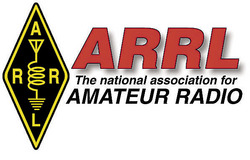 RTTY/data subband and the 75 meter phone/image subband from 3600 kHz to 3650 kHz. The ARRL's Petition points out that the proposed change has received strong support from the ARRL membership and was adopted as policy by the League's Board of Directors in July 2015. At that time the Board also agreed to seek RTTY and data privileges for Technician and Novice licensees within the portion of the 15 meter band where they now may operate CW and to do the same on 80 meters, contingent upon the 80/75 meter subband revision.
RTTY/data subband and the 75 meter phone/image subband from 3600 kHz to 3650 kHz. The ARRL's Petition points out that the proposed change has received strong support from the ARRL membership and was adopted as policy by the League's Board of Directors in July 2015. At that time the Board also agreed to seek RTTY and data privileges for Technician and Novice licensees within the portion of the 15 meter band where they now may operate CW and to do the same on 80 meters, contingent upon the 80/75 meter subband revision.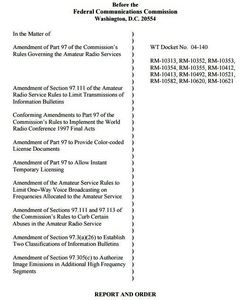
.jpg)
.JPG)
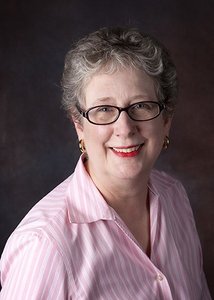
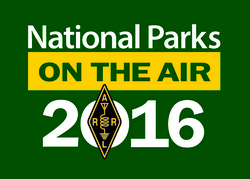 "It speaks volumes, not only about Larry being a dedicated chaser," ARRL Media and Public Relations Manager Sean Kutzko, KX9X, said, adding that 25 hams had already confirmed more than 50 units. Kutzko also called it "pretty amazing" that more than 100 NPOTA units were on the air this soon.
"It speaks volumes, not only about Larry being a dedicated chaser," ARRL Media and Public Relations Manager Sean Kutzko, KX9X, said, adding that 25 hams had already confirmed more than 50 units. Kutzko also called it "pretty amazing" that more than 100 NPOTA units were on the air this soon.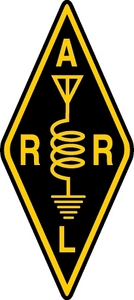 Manager, effective January 11. Dale Bagley, K0KY, had stepped down because of family commitments after having served as Missouri's SM since June 1999. Bagley recommended Higgins for the post.
Manager, effective January 11. Dale Bagley, K0KY, had stepped down because of family commitments after having served as Missouri's SM since June 1999. Bagley recommended Higgins for the post.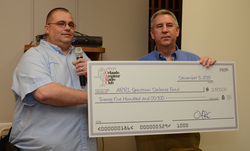

.jpg)
 The Amateur of the Year Award goes to an individual who has made a long-term, outstanding commitment to the advancement of Amateur Radio.
The Amateur of the Year Award goes to an individual who has made a long-term, outstanding commitment to the advancement of Amateur Radio.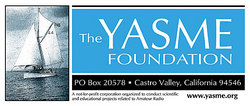 "The Yasme grant will jump-start the project by allowing the ARISS hardware team to build a prototype converter, purchase critical parts for the flight converters, and further develop the design," ARISS International President Frank Bauer, KA3HDO, said. A group of ARISS US team members convened at Johnson Space Center last month to solidify plans for the design of the next-generation radio system.
"The Yasme grant will jump-start the project by allowing the ARISS hardware team to build a prototype converter, purchase critical parts for the flight converters, and further develop the design," ARISS International President Frank Bauer, KA3HDO, said. A group of ARISS US team members convened at Johnson Space Center last month to solidify plans for the design of the next-generation radio system.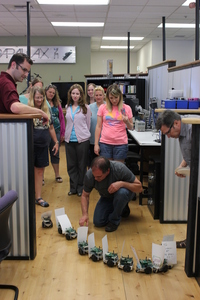
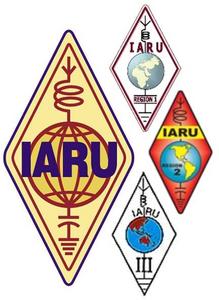 "The IARU emergency communications coordinators decided that the best way to achieve this would be to have an availability or 'call-out' exercise," Mossop said. "It asked all countries with emergency communications groups to contact their members and ask them how quickly they could get on the air if required." The start of the exercise was not announced in advance but propagated via a variety of channels, including e-mail and social media. IARU regional coordinators chose December 18 as being clear of most social and cultural events. A time limit of up to 48 hours was set for potential responding organizations to complete the local callout exercise and submit results via a web form.
"The IARU emergency communications coordinators decided that the best way to achieve this would be to have an availability or 'call-out' exercise," Mossop said. "It asked all countries with emergency communications groups to contact their members and ask them how quickly they could get on the air if required." The start of the exercise was not announced in advance but propagated via a variety of channels, including e-mail and social media. IARU regional coordinators chose December 18 as being clear of most social and cultural events. A time limit of up to 48 hours was set for potential responding organizations to complete the local callout exercise and submit results via a web form.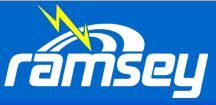 Ramsey Kits Calls it Quits: After more than 40 years as a purveyor of inexpensive electronics kits for hobbyists, the Ramsey Hobby Kits group has
Ramsey Kits Calls it Quits: After more than 40 years as a purveyor of inexpensive electronics kits for hobbyists, the Ramsey Hobby Kits group has 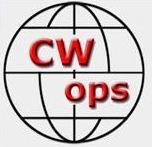 CWops Announces Award for Advancing the Art of CW:
CWops Announces Award for Advancing the Art of CW: .jpg) SAQ Alexanderson Alternator Christmas Eve Transmission Generates a Host of Reports: The 2015 Christmas Eve transmission from SAQ, the Alexanderson alternator station at the
SAQ Alexanderson Alternator Christmas Eve Transmission Generates a Host of Reports: The 2015 Christmas Eve transmission from SAQ, the Alexanderson alternator station at the  Average daily sunspot numbers rose from 41 to 55.7, and the average daily solar flux increased from 98.2 to 106.5. The average daily planetary A index declined from 16.6 to 11.1, while average daily mid-latitude A index went from 10.6 to 8.4.
Average daily sunspot numbers rose from 41 to 55.7, and the average daily solar flux increased from 98.2 to 106.5. The average daily planetary A index declined from 16.6 to 11.1, while average daily mid-latitude A index went from 10.6 to 8.4.








